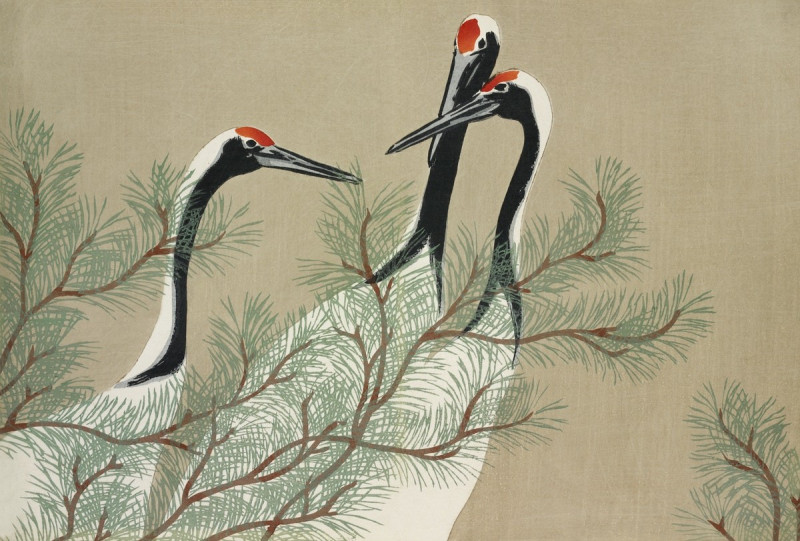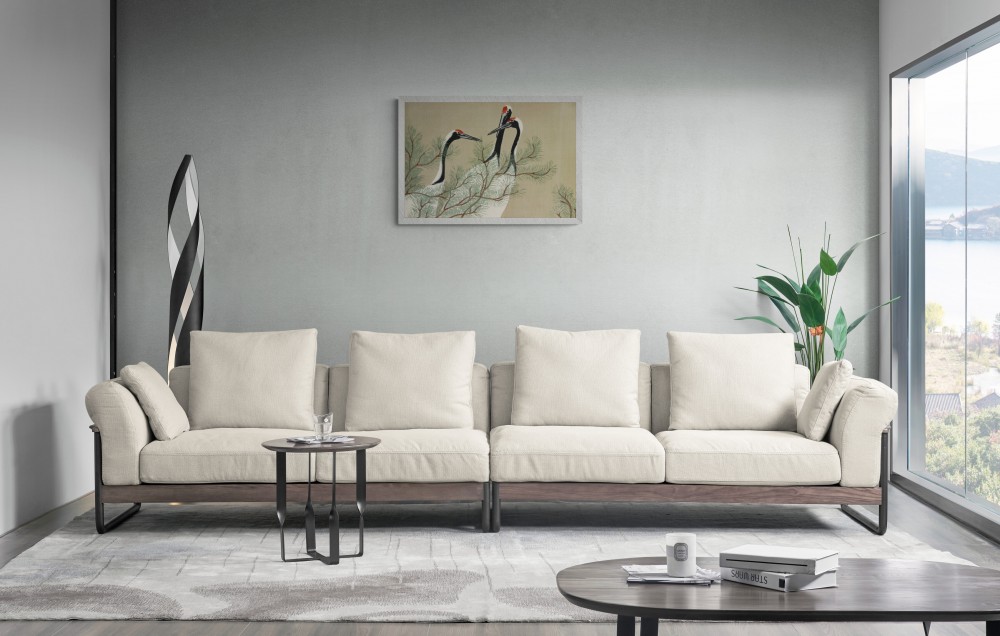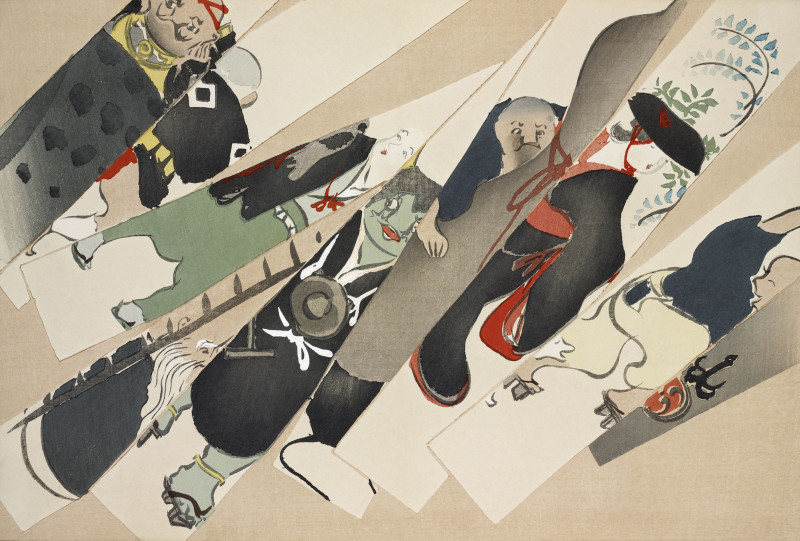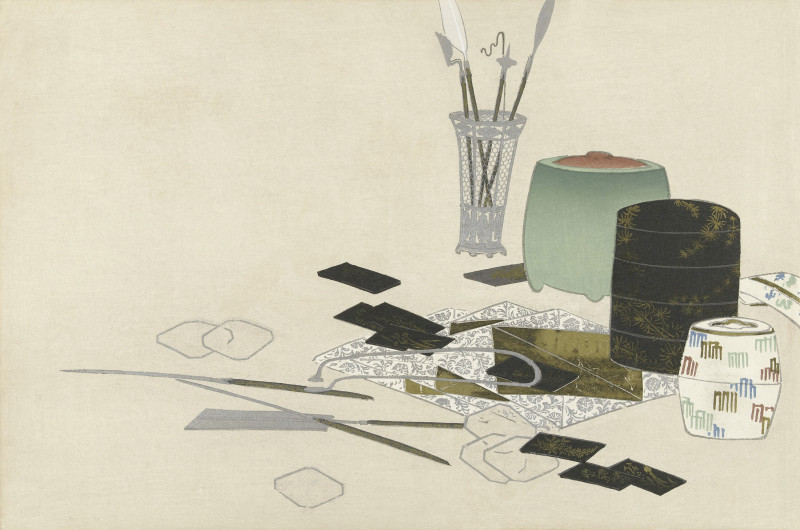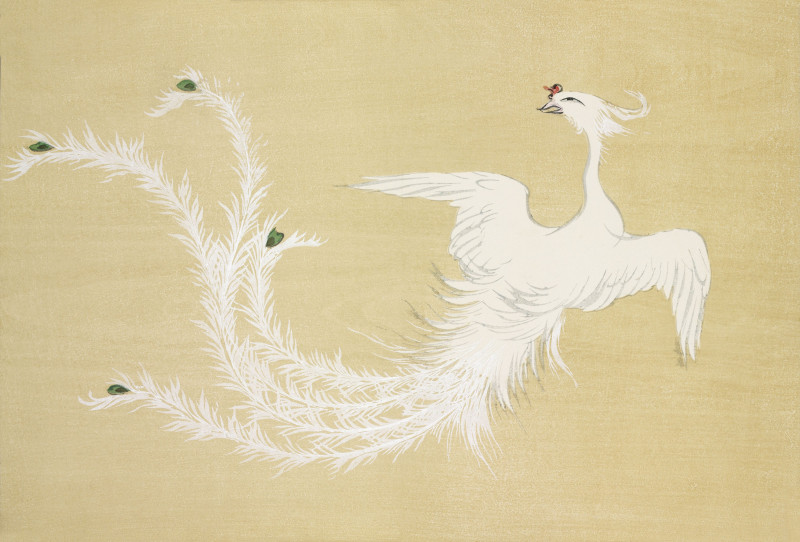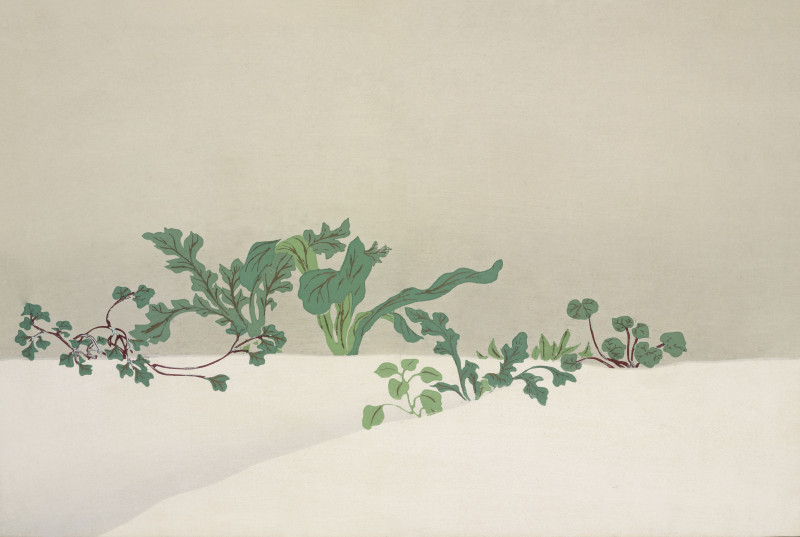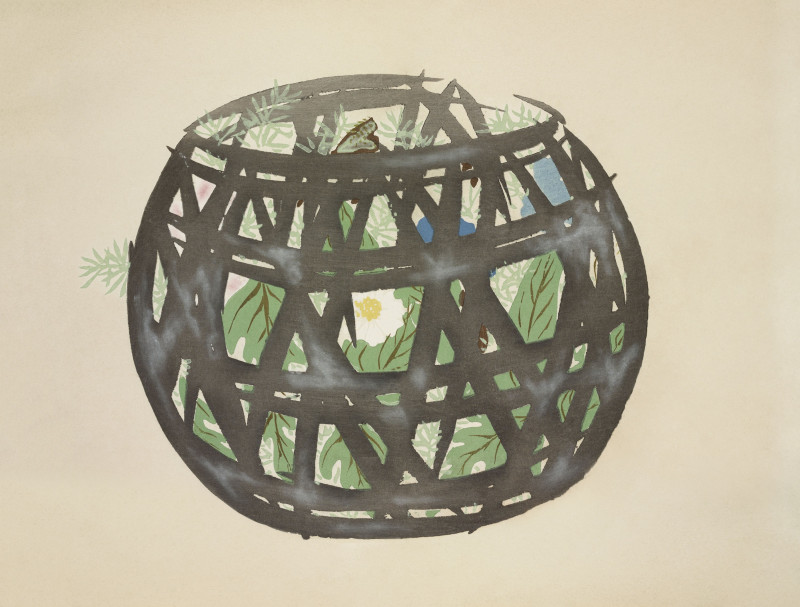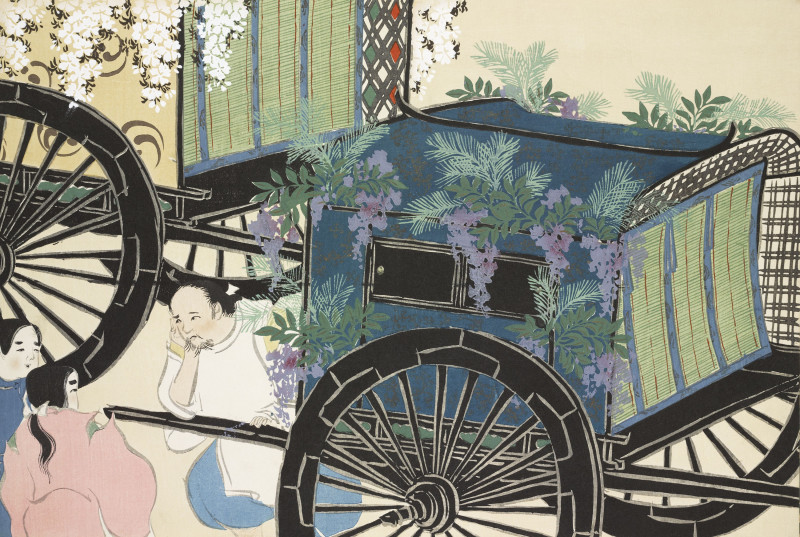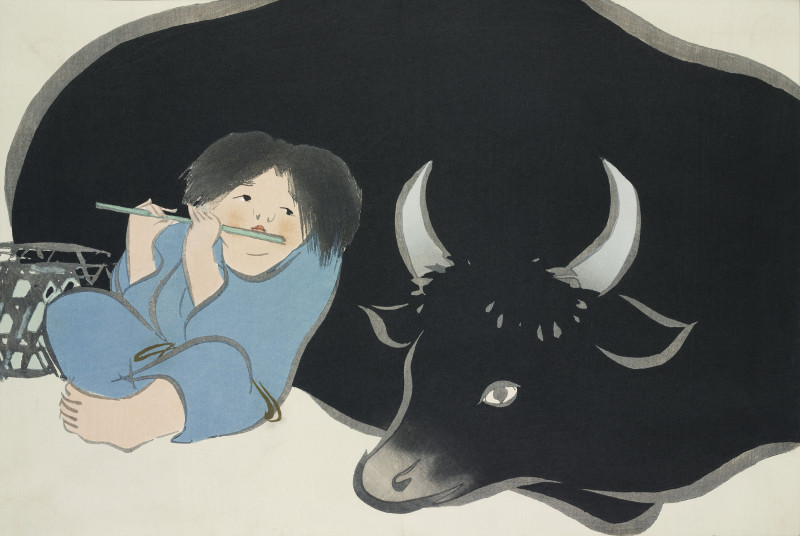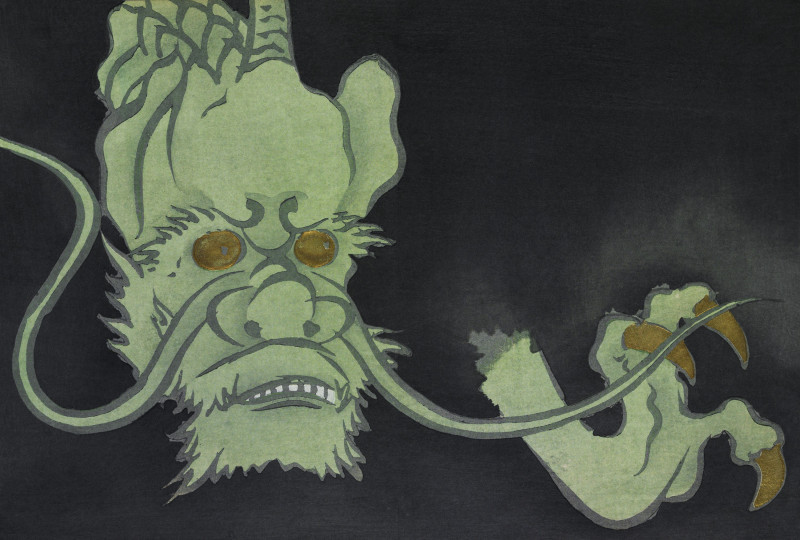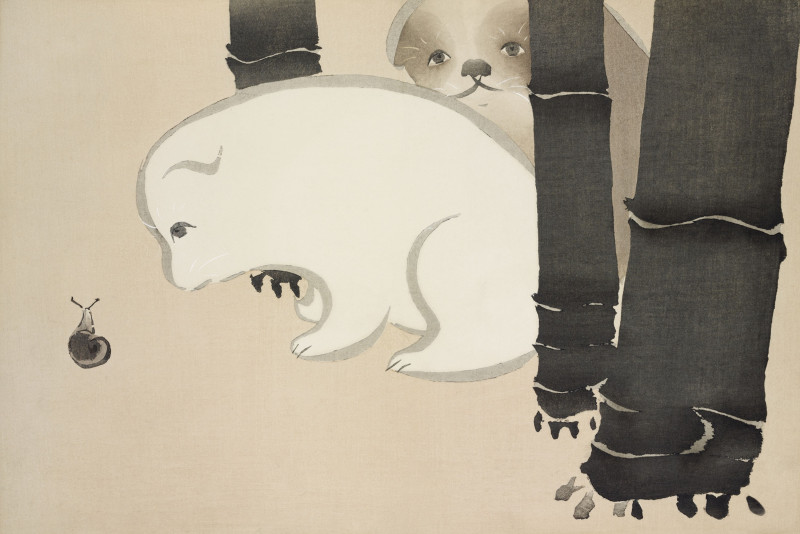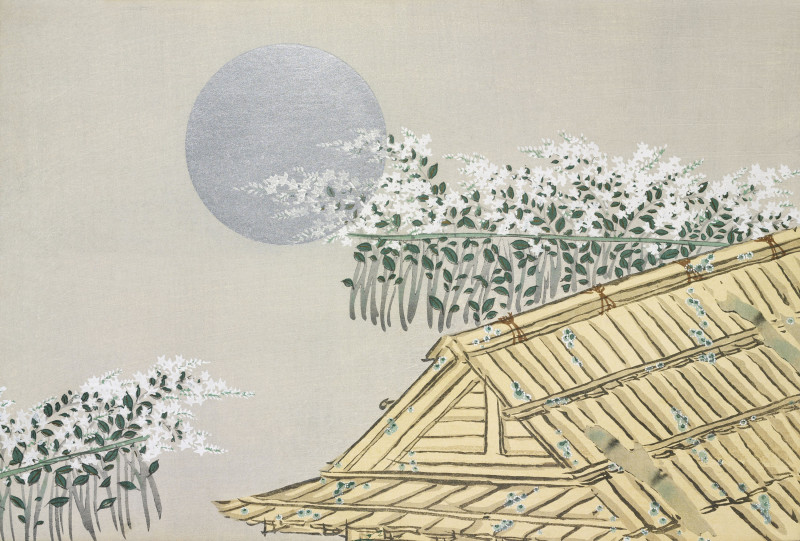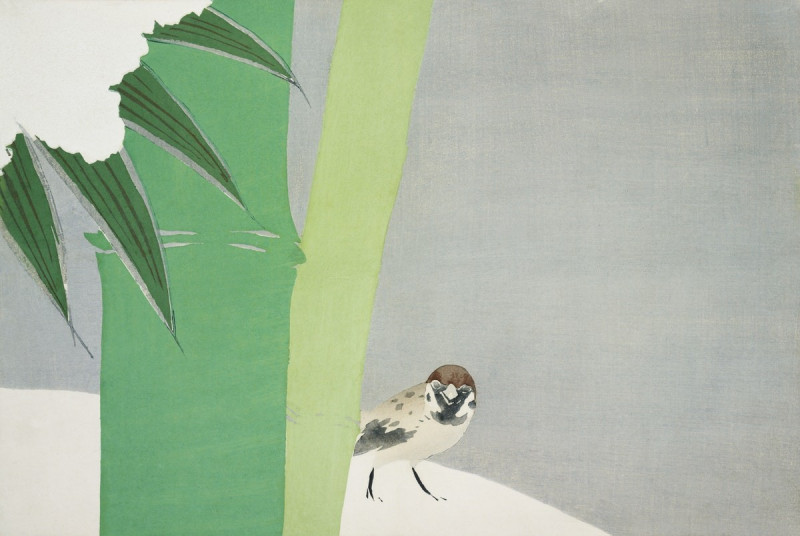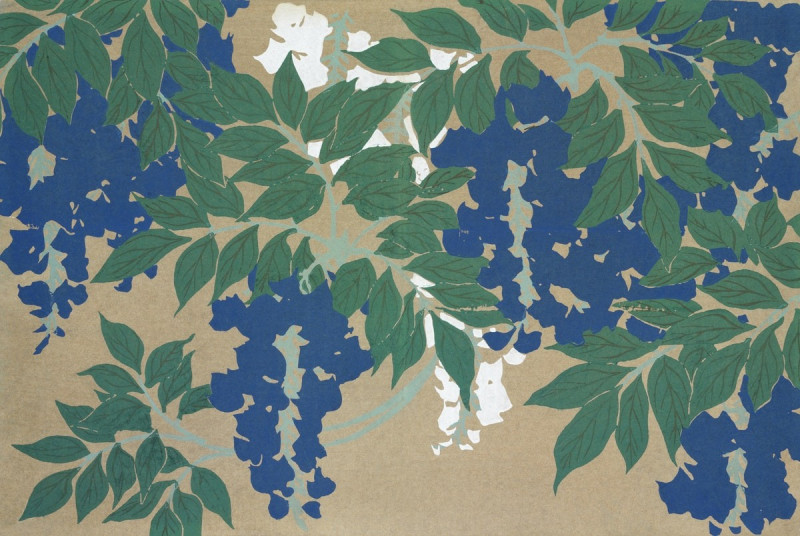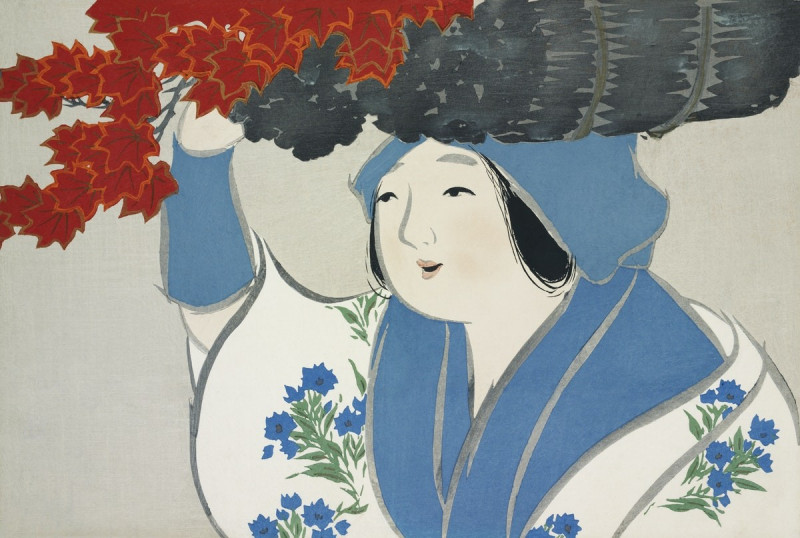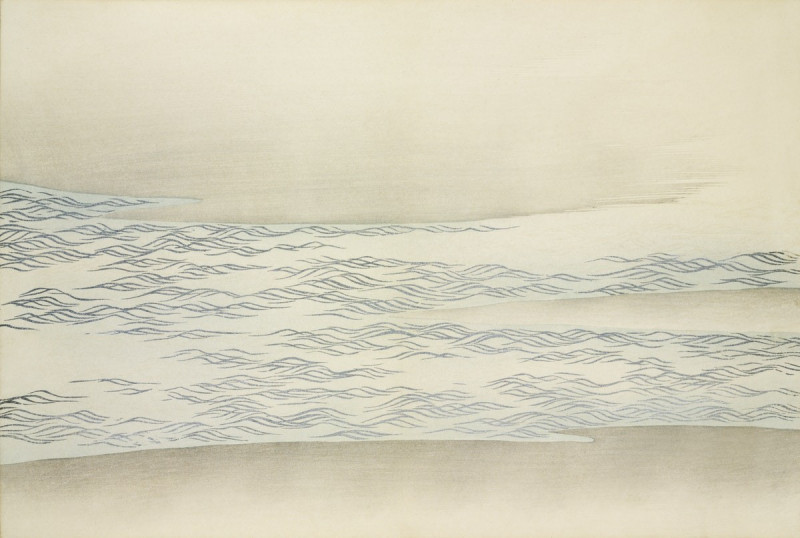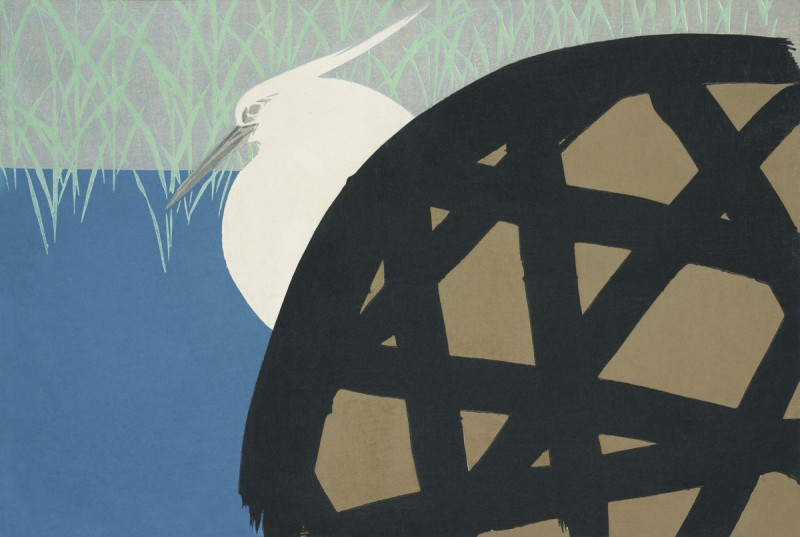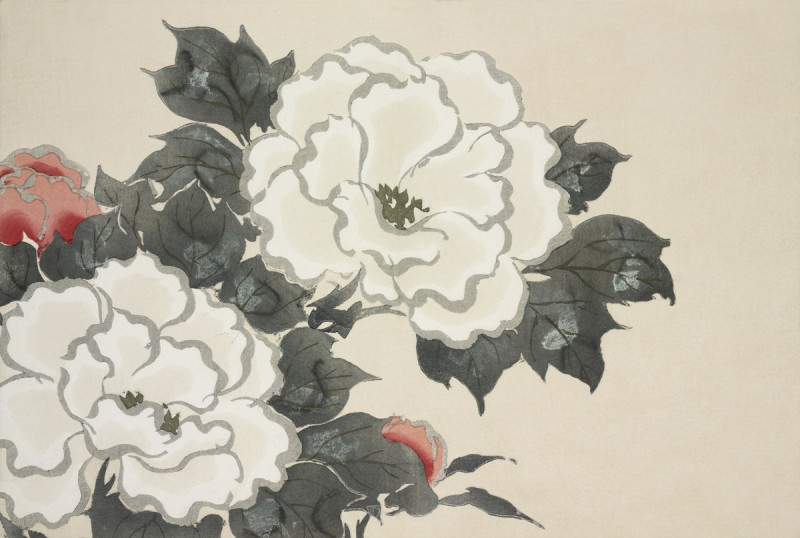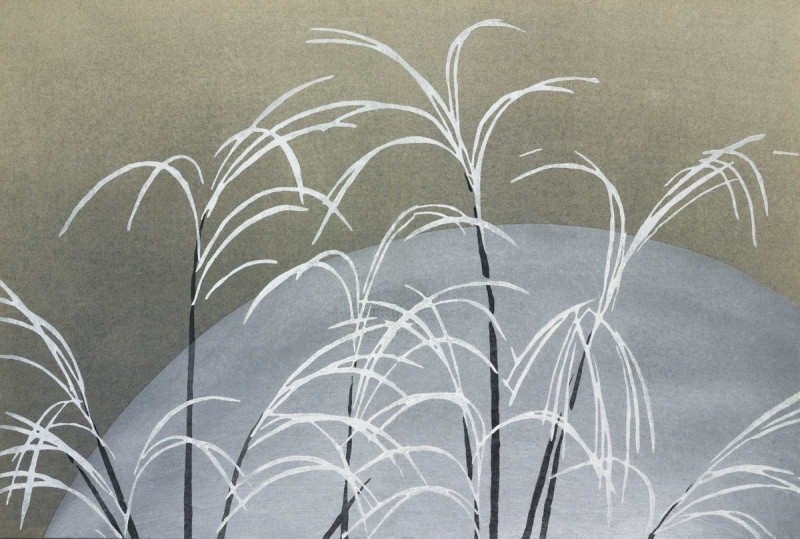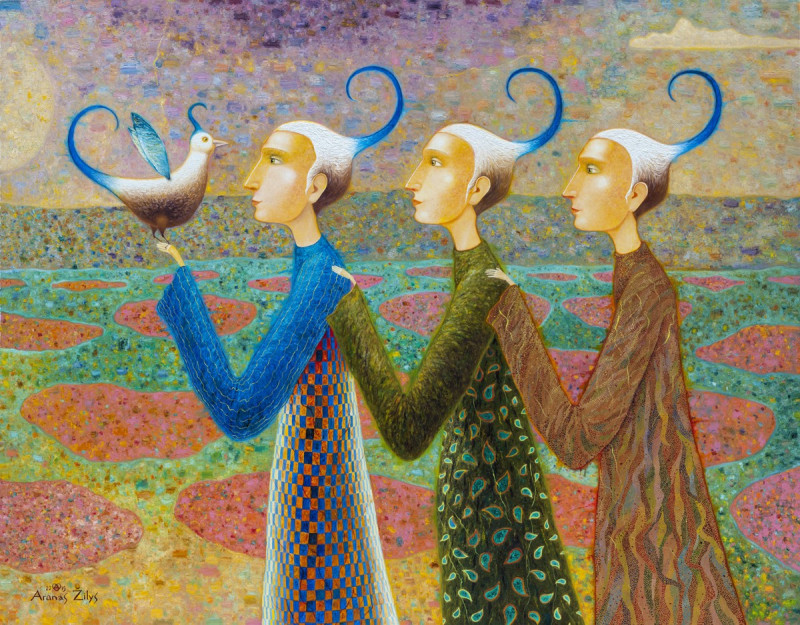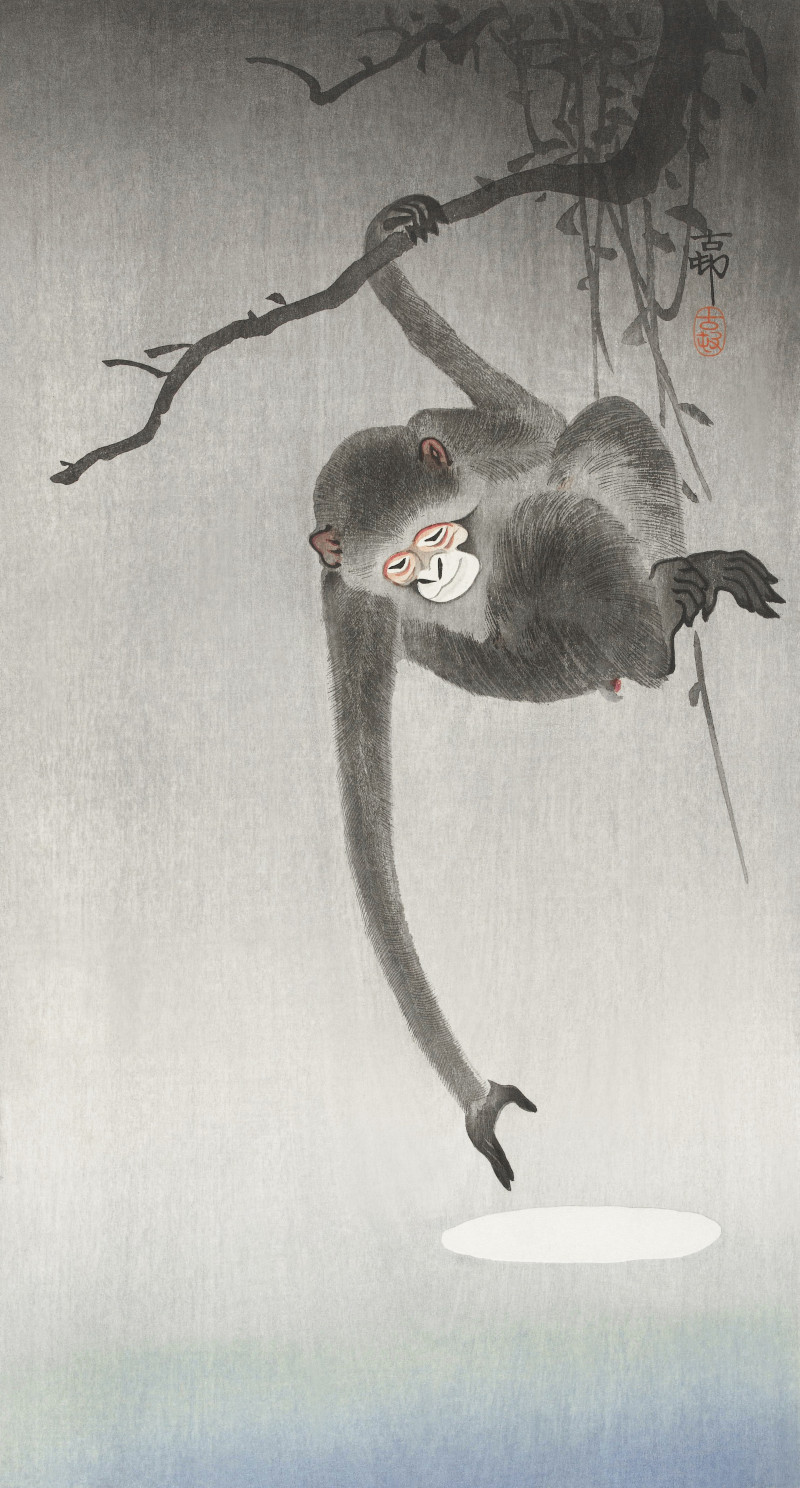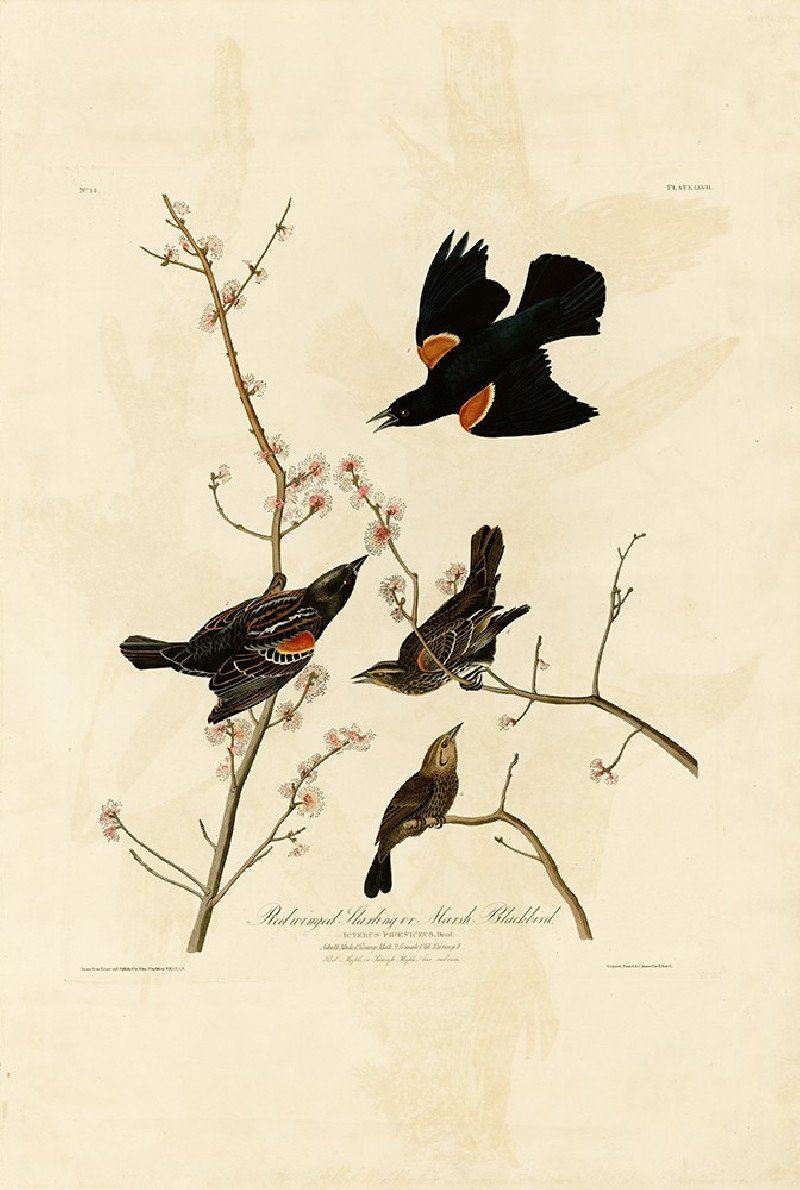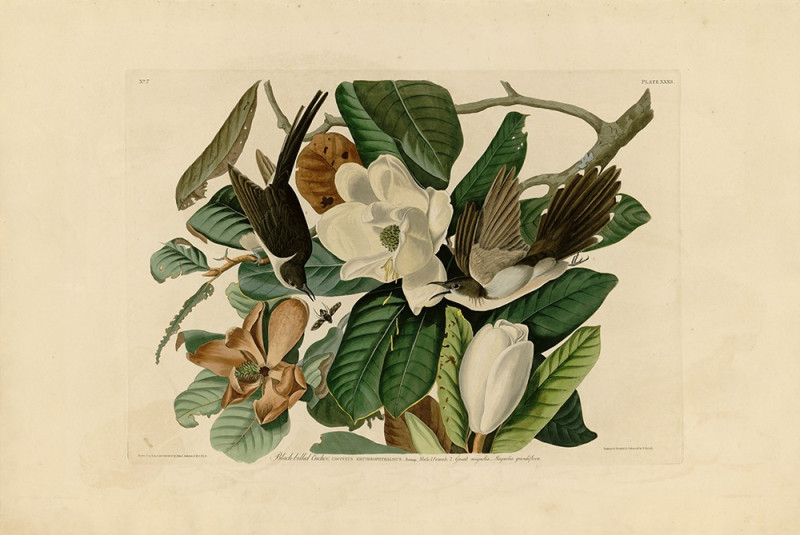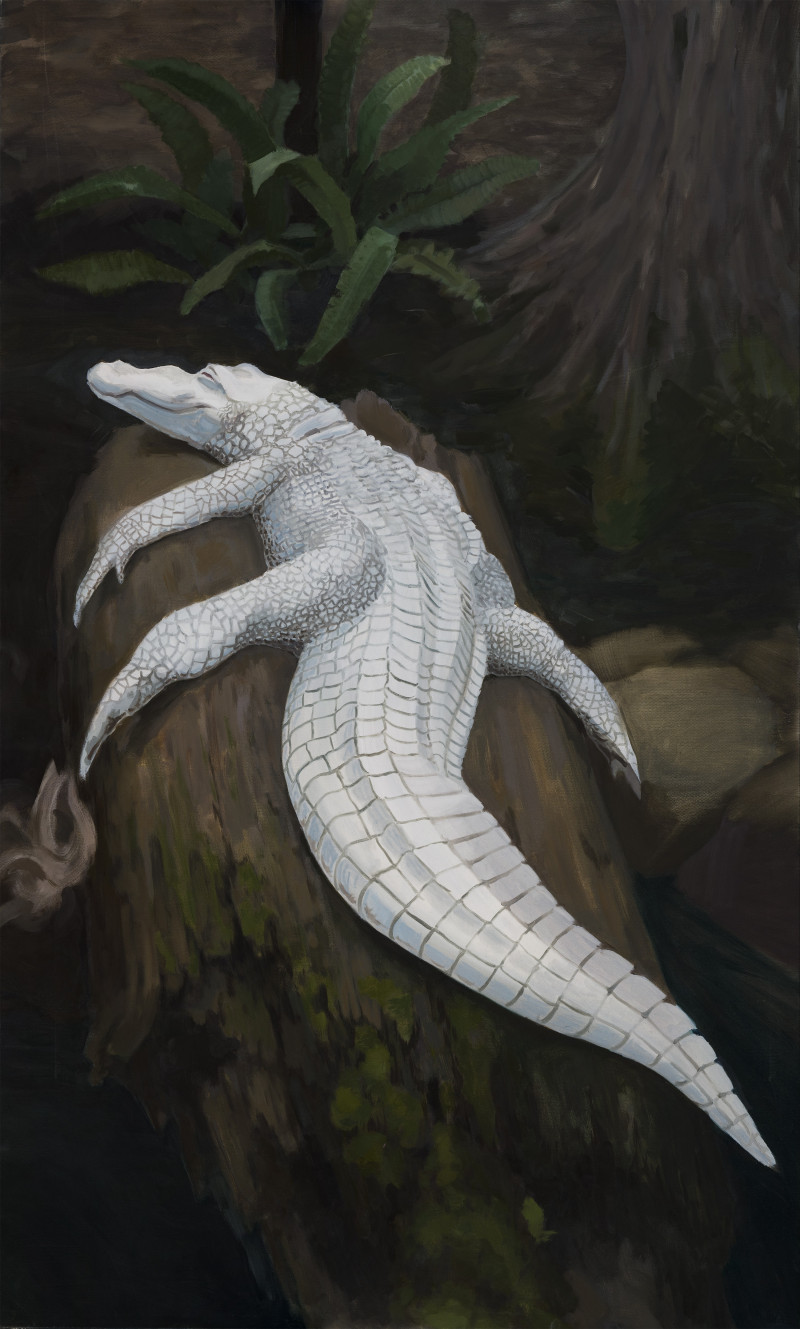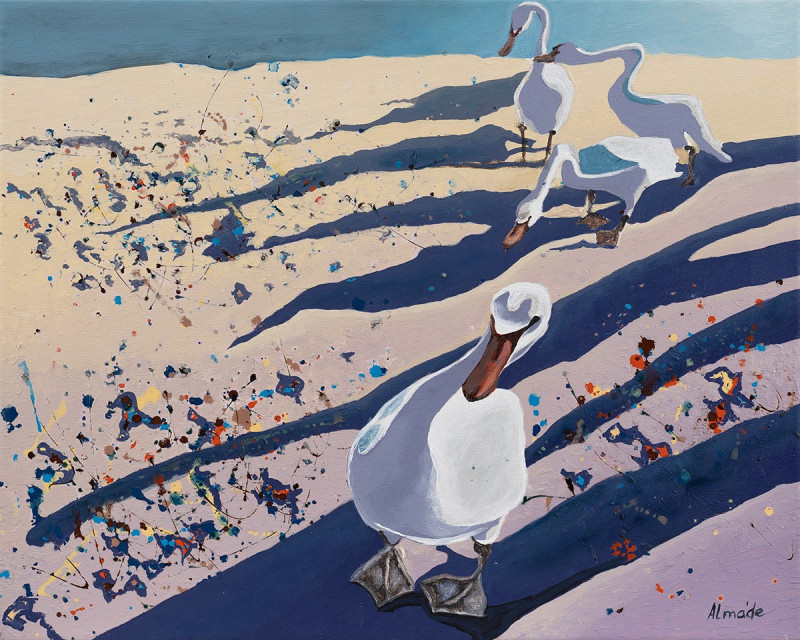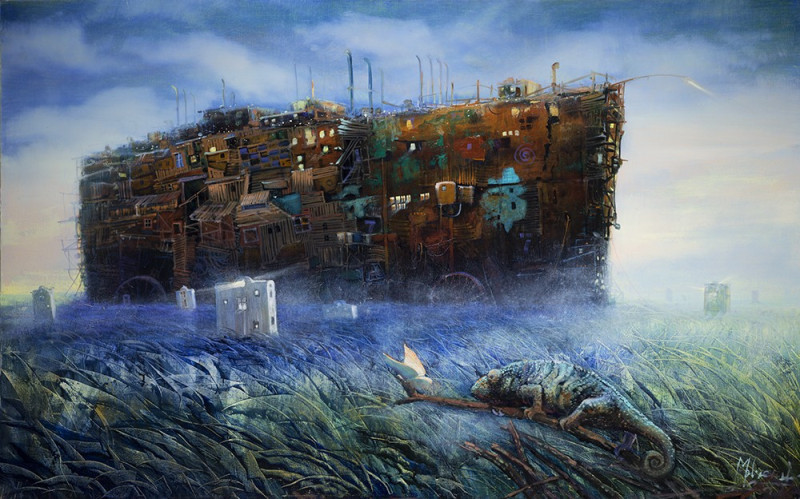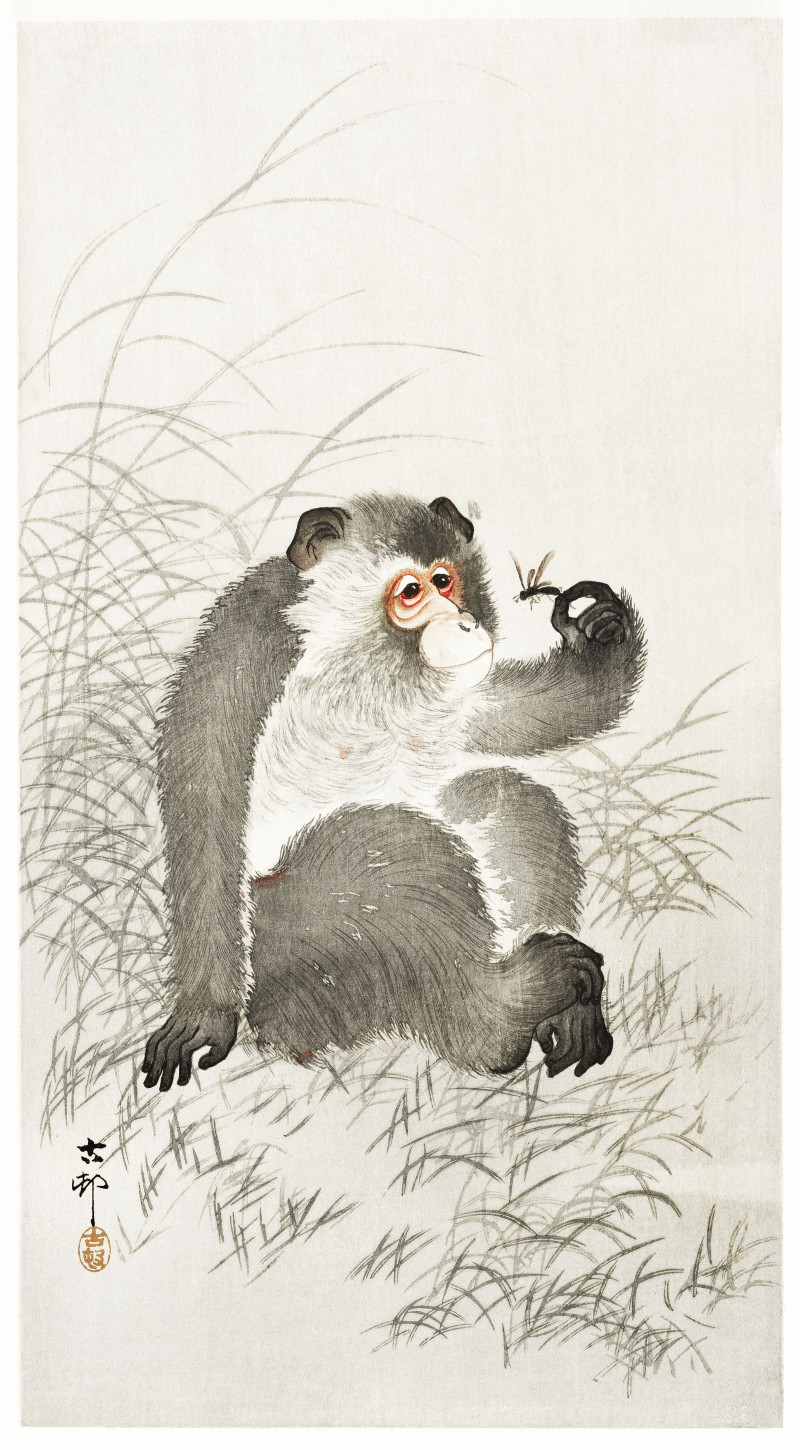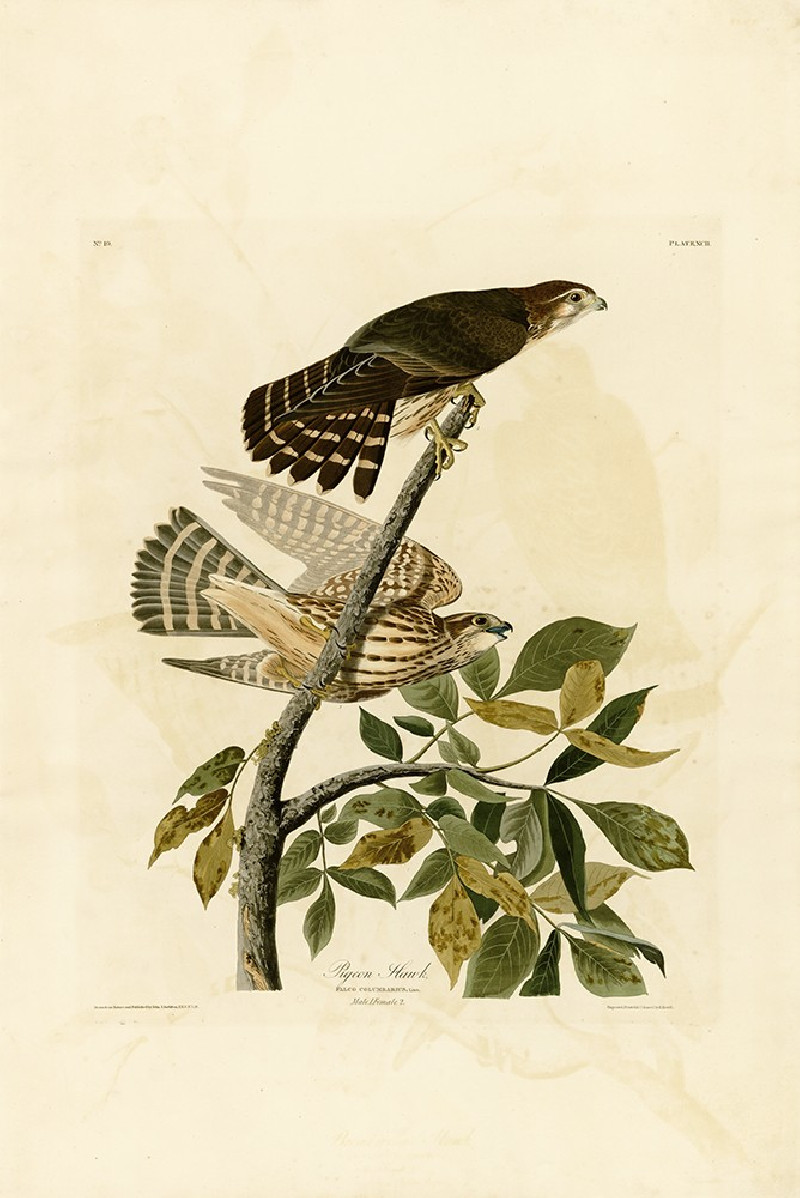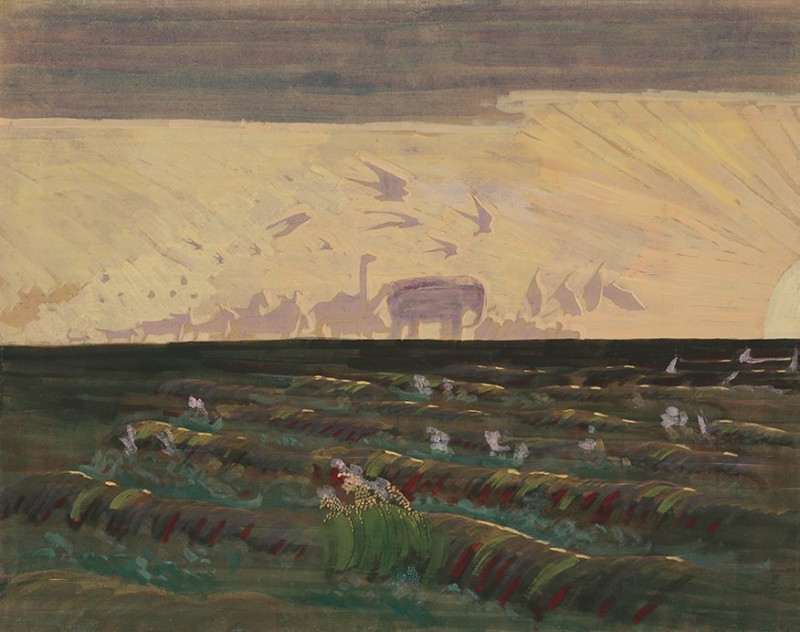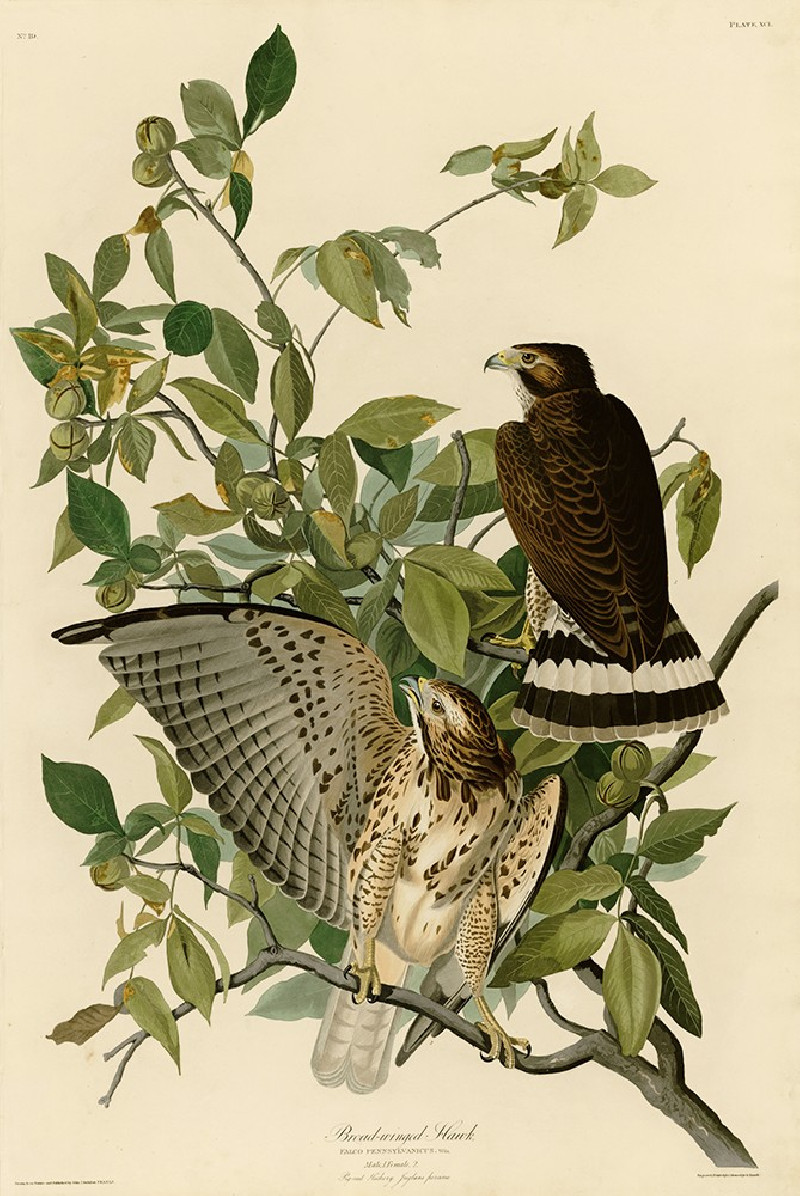Cranes from Momoyogusa
Technique: Giclée quality print
Recommended by our customers
More about this artwork
This painting, titled "Cranes" from "Momoyogusa" by Kamisaka Sekka, is a beautifully stylized depiction of three cranes among pine branches. The artist uses a minimalistic yet expressive approach to convey the elegance and grace of these birds. Each crane is depicted in profile, showcasing their long necks and distinctive red patches on their heads, which highlight their eyes and add a vivid contrast to the black and white of their bodies.The background of subdued beige provides a soft, unobtrusive canvas that allows the birds and pine branches to stand out. The pine branches are rendered in a delicate, somewhat abstract manner with fine lines and subtle shades of green, suggesting a gentle movement and natural environment.Kamisaka Sekka was a prominent artist known for revitalizing traditional Japanese artistic styles and incorporating Western influences. This work reflects his mastery in blending traditional Japanese aesthetics with a modern sense of design and composition. The overall effect is serene and poetic, embodying a sense of timeless beauty characteristic of Sekka’s art.
Delivery
Returns
Picture in the interior
Technique
Giclée quality print
Short description
Giclée quality print.
Kamisaka Sekka was an important artistic figure in early twentieth-century Japan. Born in Kyoto to a Samurai family, his talents for art and design were recognized early. He eventually allied himself with the traditional Rinpa school of art. He is considered the last great proponent of this artistic tradition.

